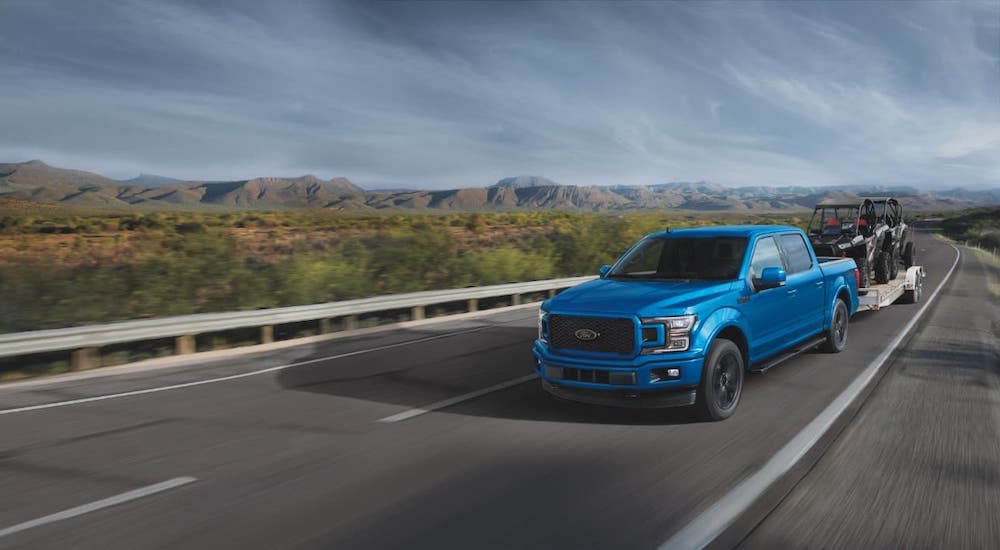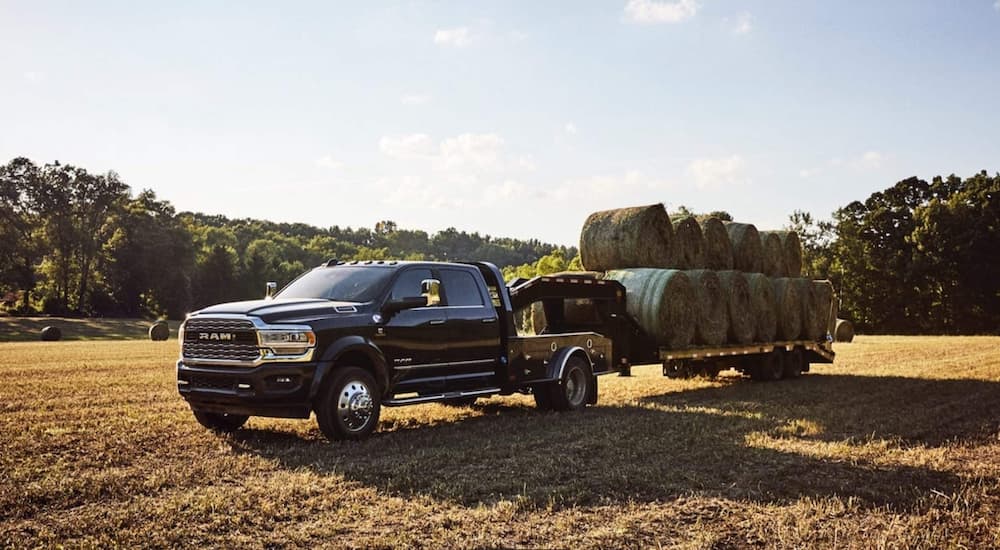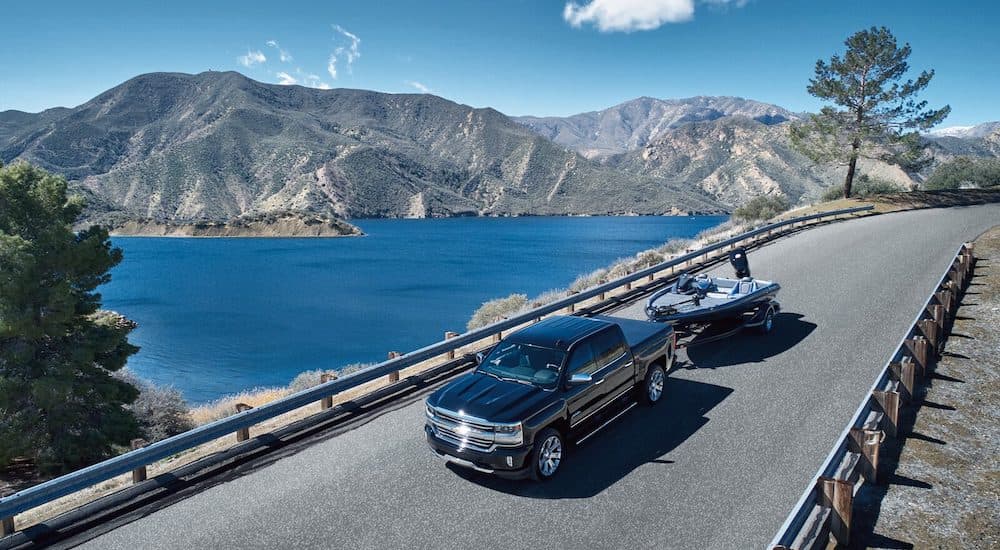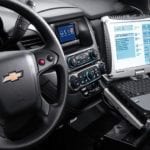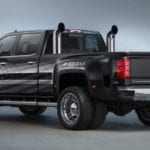It seems that truck manufacturers are in a no-holds-barred fight to see who can have the highest possible tow rating. The new F-150, for instance, now advertises up to 14,000 lbs of max towing—a simply ridiculous figure for a half-ton truck. When you see numbers like this, you might be a little skeptical; surely the manufacturer is being a little too optimistic? Well, yes and no. Modern tow ratings are held to something known as the SAE J2807 standard, so there is some method to the madness. However, those standards might not reflect how you plan on towing out in the real world. The best way to know whether you should trust your truck’s tow rating is to understand the SAE J2807 and compare it to your needs.
What Is SAE J2807?
SAE International is an independent agency responsible for promulgating standards. It particularly focuses on the automotive industry, and was originally known as the Society of Automotive Engineers when it was founded in 1905. SAE standards govern literally everything you can imagine, from how to measure horsepower down to literal nuts and bolts. In 2008, the SAE decided to turn its attention to tow ratings. Up until then, every manufacturer had its own way to measure towing capacity, which meant that you couldn’t perfectly compare tow ratings across brands.
However, the official SAE J2807 standard was not actually adopted by any manufacturer until 2013, when Toyota, Ford, GM, and Ram came onboard. Nissan was a little late to the party, but adopted the standard in 2016, making the SAE J2807 testing universal for all American trucks. This means that all truck tow ratings are now apples-to-apples comparisons across all brands, so if one truck says it can tow more than another, you can rest assured that it isn’t twisting the truth with some weird manufacturer definition of “max towing”. However, that doesn’t necessarily mean that the tow rating is accurate for your individual needs.
Visiting Davis Dam
While manufacturers might have been tempted to devise tests that would show their trucks in the best possible light, the SAE laid down an absolutely brutal testing standard that does its level best to push trucks to the limit. This isn’t just a test of how much a truck can tow without breaking down, either. Additionally, it measures speed, acceleration, braking, and other performance factors to ensure that a truck with a maximum-weight trailer in tow is still drivable in traffic.
In order to receive an SAE J2807-compliant rating, a truck with a fully-loaded trailer must be able to pass the following acceleration and braking tests on level ground:
- 0-30 mph acceleration in 12 seconds (14 seconds for duallys)
- 0-60 mph acceleration in 30 seconds (35 seconds for duallys)
- 40-60 mph acceleration in 18 seconds (21 seconds for duallys)
- 20-0 mph braking in 80 ft
And that is just the beginning. The standards also call for five consecutive launches up a 12% grade in five minutes—and then repeating that test in reverse. They even mandate a lateral grip of at least 0.3 g to prevent understeer through corners and measure trailer sway at speeds of 62 mph. All testing is also conducted with 300 lbs of passengers and 70 lbs of towing equipment, in order to add a little more realism to the rating.
However, the ultimate test is a simulated drive up from Davis Dam in 100-degree weather with the air conditioning set to full blast. For those who don’t live in the southwestern US, Davis Dam crosses the Colorado River on the border between Arizona and Nevada. Why did the SAE choose this remote location for testing? Because after crossing the river, Highway 68 climbs from 500 ft of elevation up to 3,500 ft in just 11.4 mi. In order to pass this final test, a truck must never drop below 40 mph (35 mph for duallys) until it reaches Union Pass. If a truck can handle that, there isn’t much it can’t do.
When Shouldn’t You Trust Tow Ratings?
Many old hands who remember the days of optimistic manufacturer ratings will tell you to never tow at your truck’s max listed rating. However, since the adoption of the SAE J2807 towing standards, that really isn’t a great concern anymore. Given the rigorous testing before trucks hit the sales lot, one can certainly trust what’s advertised, right?
But that doesn’t mean you should just load up a trailer to the max rating and hit the road. The point of the SAE standards is not that they provide a universally-applicable tow rating, but that they provide a transparent testing standard that anyone can review to understand their truck’s characteristics. If you aren’t towing a test trailer up from Davis Dam, then the odds are your truck won’t perform exactly as the SAE testing says it will.
Perhaps the largest weakness of the SAE J2807 standards is the test trailer. Manufacturers generally use a ballasted flatbed, which doesn’t always accurately reflect real-world use. If you are hauling a large RV at your truck’s max tow rating, the air resistance and high center of gravity of the trailer can make things sketchy. Secondly, the test standards demand that the trailer be balanced so that the tongue weight is precisely 10% of the trailer’s total weight. If your trailer isn’t balanced that nicely, then your truck might not perform as well as expected.
You also need to take your environment into account. While the Davis Dam test is grueling, it all occurs at a relatively low altitude. A journey over the 3,500-ft Union Pass in Arizona is a far cry from a trip through the 12,000-ft Independence Pass out in Colorado. As the air gets thinner, engines develop less power. So, at the extreme altitudes found in the Rockies, a truck may have barely 2/3rds of its rated horsepower—although modern turbocharged engines will perform much better than naturally aspirated engines in these conditions.
Tow Rating Standards are Great, But They Aren’t Everything
The industry acceptance of the SAE J2807 standards was a huge step forward for transparency in the industry. Not only does this mean that all manufacturers are playing on a level playing field—so consumers can make accurate comparisons—but it also serves to deflate some of the overly optimistic manufacturer tow ratings. For instance, the Chevy Silverado lost approximately 400 lbs of max tow rating overnight when GM adopted the SAE standards for the 2015 model year. When a modern truck says it can tow a certain weight, it really means that it can tow that weight safely and at reasonable speeds. However, official tow ratings still can’t cover every possible situation, and should only be considered a rough estimate for the informed truck driver.
When trying to figure out how much truck you need for your towing needs, make sure you look up official tow ratings—and be absolutely sure to check all the fine print for the exact truck model/trim/equipment package you are interested in. But don’t simply take them as gospel. Always compare the SAE J2807 standards to your personal requirements. Do you need better acceleration? Are you planning on towing at higher altitudes? Factor these in while shopping to make the wisest decision. The end result will be a towing experience you can enjoy—and rely on.
